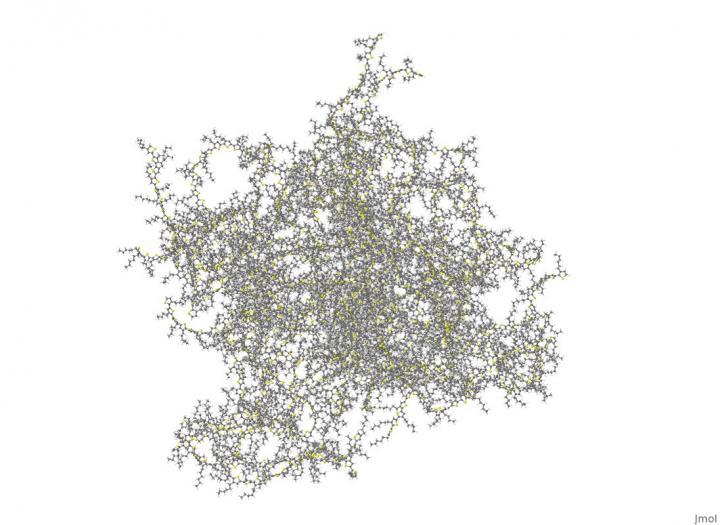Research conducted by Brazilian and Italian scientists ordered the structure of polythiophene to enhance the optical and electronic properties of this organic conductive polymer.

Credit: Marília Junqueira Caldas
Flexible electronics is one of the most important trends in technology today. The market is growing so fast that it is expected to double in value in the next decade.
Extremely light and even bendable optoelectronic equipment that supplies, detects and controls light will become commonplace in the near future. A great deal of research is progressing in this direction, as exemplified by a paper recently published in Scientific Reports.
The paper describes an experimental and theoretical study conducted by Brazilian and Italian researchers to enhance the optical and electronic properties of polythiophene, an electrically conductive and electroluminescent polymer. Organic, light, flexible and easy to process, it is highly attractive in mechanical terms.
“The configuration of polythiophene processed in the most common way, by spin casting, is so disordered as to impair its optical and electronic performance. In our study, we set out to pattern the material in a more ordered manner and make it more selective in emitting and absorbing light,” Marilia Junqueira Caldas told. Caldas is a Full Professor at the University of São Paulo’s Physics Institute (IF-USP) in Brazil and participated in the study by contributing to the theoretical framework that described and explained the experimental data.
The pattern she mentioned was obtained via a surprisingly simple stacking arrangement. A droplet of the polymer in solution was deposited on a substrate. As it evaporated, an elastomeric stamp was placed on it to produce a sequence of parallel stripes, which organized the internal structure of the material.
“Patterning made the polymer absorb and emit light in a highly predictable manner, so that stimulated light emission was possible at frequencies not feasible with disordered film. In addition to this gain in selectivity, the resulting device was far lighter than others with a similar function based on stacked layers of several types of semiconductor,” Caldas said.
She explained the relationship between selectivity and ordering as follows. “We calculated its molecular dynamics to find out how it behaved in the disordered phase. We obtained a set of tortuous, intertwined and coupled structures. In this situation, an electron shifted from its initial position by light incidence may become misaligned with the hole left in the atom chain and migrate to distant regions in the interior of the material,” she said.
“This happens to a large number of electrons, and light absorption and emission are highly disordered as a result. Patterning makes the atom chains almost linear, and electrons and holes are very close together in the same chains. The electrons migrate and then return to their starting point, where they emit and absorb light.”
This technique organized the intrinsically disordered material during the process of “growth,” and as such, it can be used in a wide range of optoelectronic applications.
“Our approach demonstrates a viable strategy to direct optical properties through structural control, and the observed optical gain opens up the possibility of using polythiophene nanostructures as building blocks for organic optical amplifiers and active photonic devices,” the authors say in the article.
###
Caldas and Rodrigo Ramos, whose PhD research she was supervising at the time of the study, received support from FAPESP via the National Science and Technology Institute for Organic Electronics (INEO), one of the National S&T Institutes funded by São Paulo Research Foundation – FAPESP in partnership with Brazil’s National Council for Scientific and Technological Development (CNPq).
About São Paulo Research Foundation (FAPESP)
The São Paulo Research Foundation (FAPESP) is a public institution with the mission of supporting scientific research in all fields of knowledge by awarding scholarships, fellowships and grants to investigators linked with higher education and research institutions in the State of São Paulo, Brazil. FAPESP is aware that the very best research can only be done by working with the best researchers internationally. Therefore, it has established partnerships with funding agencies, higher education, private companies, and research organizations in other countries known for the quality of their research and has been encouraging scientists funded by its grants to further develop their international collaboration. You can learn more about FAPESP at http://www.
Media Contact
Joao Carlos Silva
[email protected]
Original Source
http://agencia.
Related Journal Article
http://dx.



